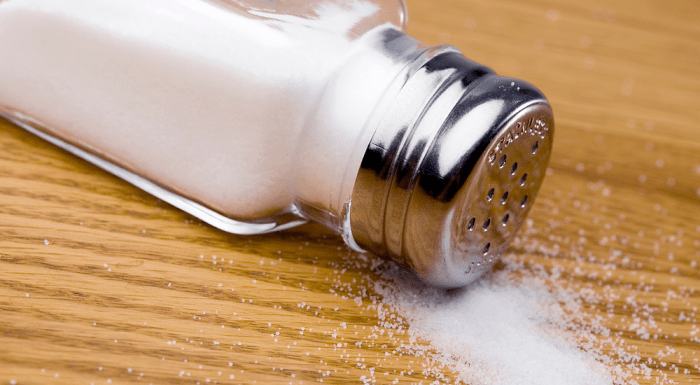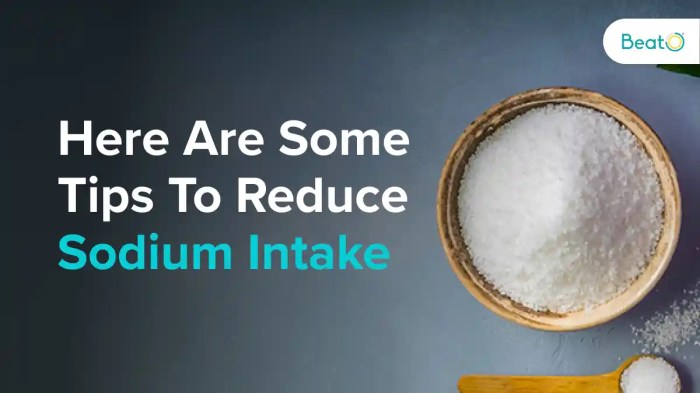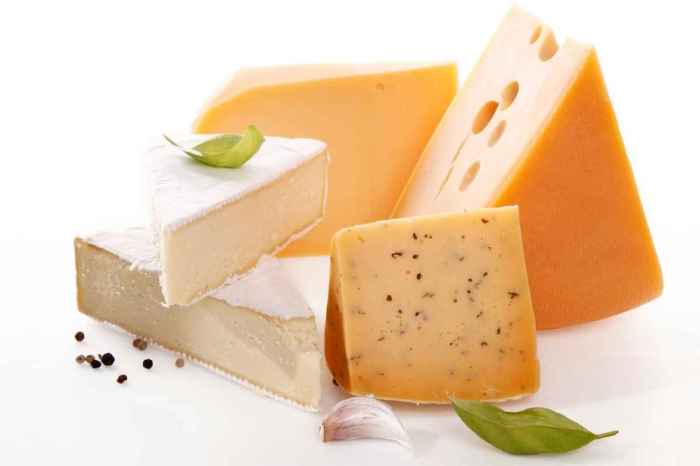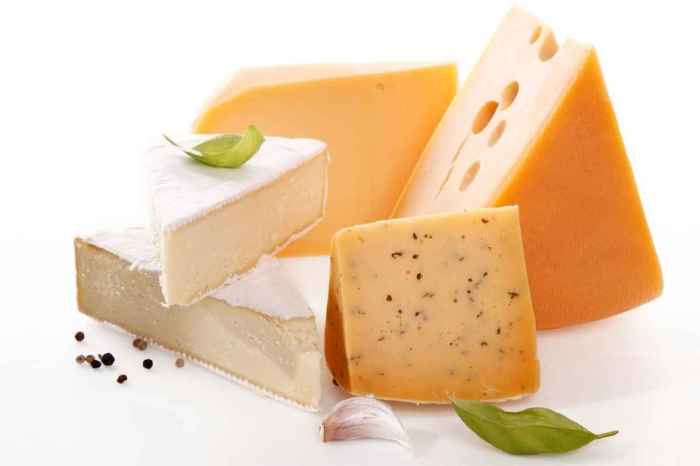Why is it so hard to cut back on sodium? This isn’t just about willpower; it’s a complex interplay of physiological cravings, ingrained habits, and the pervasive presence of sodium in processed foods. We’ll delve into the science behind salt cravings, explore the sneaky ways food manufacturers add sodium, and uncover the psychological factors that keep us reaching for the salty snacks.
Get ready to understand the challenges and discover practical strategies for a healthier, lower-sodium lifestyle.
From the subtle shifts in our body’s chemistry when we reduce sodium to the cultural norms surrounding salt-heavy meals, this exploration reveals the multifaceted reasons behind our struggle. We’ll examine how different populations react to sodium restriction, from athletes to pregnant women, and uncover the hidden influence of food processing on our daily sodium intake. Ultimately, we aim to equip you with the knowledge and tools to make informed choices and take control of your sodium intake.
Understanding the Problem
Reducing sodium intake is a common health goal, yet it often proves challenging. This difficulty stems from a complex interplay of physiological and psychological factors. Understanding these mechanisms is key to developing effective strategies for sustainable sodium reduction.The human body has evolved to crave sodium for crucial functions like maintaining fluid balance and nerve impulse transmission. This innate desire for salt is deeply ingrained in our physiology.
Physiological Mechanisms Behind Salt Cravings
The body meticulously regulates sodium levels. When sodium levels dip too low, specialized receptors in the brain and kidneys trigger a cascade of signals, leading to a physiological drive to consume salty foods. This is a crucial homeostatic mechanism. The body’s response is akin to a thermostat adjusting the internal environment. When sodium levels fall, the body signals for salt intake.
Body’s Reaction to Sudden Sodium Reduction
A sudden reduction in sodium intake can elicit various responses. Headaches, fatigue, and muscle cramps are common symptoms. These symptoms often arise due to the body’s attempts to restore sodium balance. The body’s efforts to maintain sodium levels can manifest in discomfort. The intensity of these symptoms varies depending on the individual and the rate of sodium reduction.
Habit and Learned Behavior in Maintaining High Sodium Consumption
Our daily routines often dictate our dietary choices. High sodium consumption is frequently entrenched in habits and learned behaviors, often stemming from family traditions, cultural preferences, or even marketing influences. These ingrained habits can override conscious decisions about sodium intake. Changing ingrained patterns takes consistent effort and mindful awareness.
Physiological Need vs. Psychological Desire for Salt
The physiological need for sodium is essential for bodily functions, while the psychological desire for salt often stems from learned preferences and associations. These preferences might be tied to the taste and palatability of salty foods. The distinction between these two drives is crucial in understanding the challenge of reducing sodium intake. The pleasure associated with salty foods adds to the difficulty.
Comparison of Sodium Restriction Effects Across Populations
| Population | Potential Effects of Sodium Restriction | Considerations |
|---|---|---|
| Athletes | Potential for decreased performance due to fluid balance disruption if not carefully managed. May require careful monitoring and adjustment of electrolyte intake. | Careful planning and monitoring are necessary to avoid adverse effects on performance. |
| Elderly | Increased risk of orthostatic hypotension (dizziness upon standing) due to altered sodium regulation. May require smaller adjustments in sodium intake and careful monitoring of blood pressure. | Gradual reduction is crucial to avoid complications. Consultation with healthcare professionals is highly recommended. |
| Pregnant Women | Potential for increased sodium needs due to pregnancy-related physiological changes. Careful management of sodium intake is essential for both the mother and the developing fetus. | Consultation with a healthcare provider is essential to determine appropriate sodium levels during pregnancy. |
The table above highlights potential differences in how various populations respond to sodium restriction. These considerations are critical when creating personalized dietary strategies.
The Role of Food Processing
Food processing, while crucial for preserving food and increasing its availability, often plays a significant role in elevating sodium content. Modern methods of processing food frequently involve the addition of salt, sometimes at levels exceeding what’s naturally present. This practice, coupled with the increasing consumption of processed foods in modern diets, has contributed to the rising concern surrounding sodium intake.Food processing techniques, from simple preservation methods to complex manufacturing procedures, can significantly alter the sodium content of ingredients.
This manipulation often leads to a higher sodium concentration in the final product compared to its unprocessed counterpart. The intentional addition of salt during processing is a major factor, but other factors, such as the types of ingredients used and the manufacturing processes themselves, also contribute to the sodium profile of the food.
Methods of Increasing Sodium in Food Processing
Food manufacturers utilize various techniques to increase sodium content. These methods range from straightforward salt additions to more intricate procedures aimed at enhancing flavor and texture.
It’s tough to ditch the sodium, isn’t it? Processed foods are practically swimming in it, and that familiar salty flavor is deeply ingrained in our palates. Sometimes, it’s like trying to convince someone to adopt a healthier lifestyle, especially when it comes to things like diet and preventive care. For example, ask an expert how can you encourage a loved one to start preventive care if you’re looking for guidance on that front.
Ultimately, making those healthy swaps is a marathon, not a sprint, and requires a lot of patience and persistence.
- Salt is a common ingredient used for preservation and flavor enhancement in processed foods. This addition is often intentional and contributes to the higher sodium levels observed in many processed items.
- Certain preservation methods, like pickling or curing, use high concentrations of salt to inhibit microbial growth and extend shelf life. This leads to significantly higher sodium content in the final product compared to the original ingredient.
- Food manufacturers may utilize sodium-rich ingredients or components, like soy sauce, bouillon cubes, or broth concentrates, to enhance flavor and sodium content in processed foods.
- Food manufacturers often adjust recipes to increase salt levels in order to meet consumer expectations for specific tastes. This can result in higher sodium content in foods, even if it’s not always directly added.
Examples of Naturally High and Added Sodium Foods
Understanding the difference between naturally high sodium foods and those with added sodium is essential. Some foods naturally contain significant amounts of sodium, while others have substantial sodium added during processing.
Cutting back on sodium is tough, isn’t it? It’s practically everywhere! Processed foods are often loaded with it, and honestly, figuring out exactly where it’s hiding can be a real challenge. That’s why understanding your body’s response to sodium, like in the case of certain types of esophagitis, is so important. For instance, what type of esophagitis do I have ?
It might even be affecting your ability to cut down on sodium. This whole sodium reduction thing feels like a never-ending battle! I’m still trying to figure it out.
- Foods naturally high in sodium include seafood, such as shrimp and oysters, as well as some vegetables, such as spinach and beets. While these foods contain naturally occurring sodium, their sodium content is often significantly lower than the levels found in processed foods.
- Foods with added sodium include many processed snacks, such as potato chips and pretzels, and canned goods, such as soups and vegetables. The added sodium in these foods often significantly elevates the overall sodium content.
Comparison of Sodium Content in Processed vs. Whole Foods
The sodium content of processed foods often drastically exceeds that of whole foods. The processing techniques used in creating processed foods often result in a higher sodium content compared to the original ingredients.
| Food Category | Sodium Content (Approximate) |
|---|---|
| Fresh Fruits and Vegetables | Low |
| Unprocessed Meats | Moderate |
| Processed Meats (e.g., bacon, sausage) | High |
| Snacks (e.g., chips, pretzels) | Very High |
| Breakfast Cereals | Variable, often high |
| Canned Goods (e.g., soups, vegetables) | High |
Behavioral and Psychological Factors

Cutting back on sodium isn’t just about understanding food labels; it’s a complex interplay of ingrained habits, emotional responses, and cultural influences. These behavioral and psychological factors often make it challenging to reduce sodium intake, even when we know it’s beneficial for our health. We need to acknowledge these influences to develop effective strategies for long-term change.The human body is wired to crave certain flavors, and saltiness is one of them.
This preference isn’t arbitrary; it’s a deeply rooted aspect of our evolutionary past. Salt was crucial for survival, and our bodies developed a sensitivity to its presence. This inherent preference for salty foods can make reducing sodium intake a significant hurdle.
Psychological Triggers for High Sodium Intake
Our brains associate salty foods with positive sensations, often linked to learned experiences and cultural norms. This creates a powerful psychological trigger that influences our choices. For example, a child who regularly consumes heavily salted snacks might develop a strong preference for that taste. This ingrained taste preference is often resistant to change without conscious effort.
Cutting back on sodium feels like an uphill battle, doesn’t it? It’s everywhere, hidden in processed foods and even seemingly healthy options. Plus, our bodies are wired to crave it, which makes the transition to a lower-sodium diet tough. Understanding how this ties into complex conditions like an overview of familial dysautonomia shows just how deeply ingrained sodium is in our systems.
Ultimately, breaking the sodium habit takes a multi-faceted approach, combining mindful choices and perhaps even exploring underlying medical factors.
Impact of Taste Preferences and Cultural Norms
Cultural norms play a substantial role in shaping our taste preferences. In many cultures, high sodium foods are commonplace, sometimes even considered essential components of traditional dishes. The social context surrounding these foods reinforces their consumption. For instance, certain holiday meals or family gatherings may feature dishes high in sodium, making it challenging to maintain lower sodium intake within social settings.
Influence of Emotional Factors on Sodium Cravings, Why is it so hard to cut back on sodium
Stress and anxiety can trigger cravings for salty foods. When we’re feeling stressed, our bodies often seek out foods that offer a sense of comfort and satisfaction. High sodium foods, with their intense flavor, can provide a temporary sense of relief from stress. Recognizing this connection is crucial for developing healthier coping mechanisms.
Behavioral Strategies for Reducing Sodium Intake
Several behavioral strategies can help reduce sodium intake. Mindful eating, for example, involves paying close attention to the taste, texture, and overall experience of food. This practice can help us become more aware of how much sodium we’re consuming and make conscious choices about our intake. Habit modification focuses on breaking unhealthy routines. For instance, replacing a salty snack with a healthier alternative can slowly change our eating habits over time.
Creating Healthier Low-Sodium Food Choices
Substituting high-sodium foods with low-sodium alternatives is a crucial aspect of a healthy dietary shift. Instead of relying on pre-packaged snacks or processed foods, exploring fresh, whole foods like fruits, vegetables, and lean proteins can dramatically reduce sodium intake. Many herbs and spices offer rich flavor profiles without relying on sodium. Experimentation with different seasonings and flavors can greatly reduce reliance on high-sodium options.
Practical Strategies for Reduction
Breaking free from the sodium cycle can feel like climbing a mountain. But it’s absolutely achievable! This section dives into practical methods for lowering your sodium intake, offering concrete steps and delicious alternatives to help you savor flavor without the salt.Understanding the sources of sodium in our diet is crucial for effective reduction. While processed foods are a major culprit, even seemingly healthy options can hide significant amounts of salt.
By learning to read food labels and making informed choices, you can significantly modify your sodium consumption.
Preparing Meals with Reduced Sodium
Changing your cooking habits is a key part of lowering sodium. Experimenting with different spices, herbs, and flavorings can create amazing, complex tastes without relying on salt. Instead of adding salt at the table, try incorporating herbs like rosemary, thyme, oregano, or parsley into your dishes. Garlic, ginger, and onions can also add depth and flavor.Many flavorful dishes can be prepared with significantly less sodium than traditional recipes.
Broths and stocks, made from vegetables, herbs, and spices, offer a rich base for soups, stews, and sauces. Use them to enhance flavor instead of relying on salt-laden bouillon cubes or pre-made sauces. When cooking meat, focus on marinating with flavorful ingredients like citrus juices, vinegar, and spices. This will allow the meat to absorb these flavors, minimizing the need for extra salt.
Low-Sodium Alternatives to Common High-Sodium Ingredients
Reducing sodium often requires finding substitutes for high-sodium items. This is not about eliminating flavor; it’s about discovering new flavor profiles.
- Instead of using table salt, opt for sea salt, Himalayan pink salt, or even salt-free seasoning blends. These alternatives often have a different mineral profile and can offer a unique flavor experience.
- Many pre-made sauces, soups, and seasonings contain high levels of sodium. Consider making your own sauces from scratch using fresh ingredients and herbs, or look for low-sodium versions of store-bought options.
- When buying canned goods, choose low-sodium options whenever available. Rinse canned beans or vegetables before using them to remove some of the excess sodium.
Resources for Practical Advice
Numerous resources can help you navigate the world of low-sodium eating.
- The American Heart Association offers comprehensive information and resources on sodium reduction. Their website provides valuable insights into healthy eating habits and low-sodium recipes.
- Many nutrition apps, such as MyFitnessPal and Lose It!, provide detailed information about the sodium content of foods. They can assist you in tracking your intake and making informed choices.
- Books like “The Complete Low-Sodium Cookbook” by [Author Name] offer detailed recipes and practical guidance for reducing sodium in your diet.
Healthy Low-Sodium Recipes
Exploring low-sodium recipes opens up a world of delicious possibilities.
- Lemon Herb Roasted Chicken: Marinate chicken pieces in lemon juice, herbs (rosemary, thyme), garlic, and a touch of olive oil. Roast until cooked through, avoiding the use of salt. This dish provides a burst of flavor without the need for excess sodium.
- Vegetable and Lentil Soup: Use a vegetable broth as the base for the soup, adding a variety of colorful vegetables and lentils. Season with herbs and spices to enhance the flavors. This is a hearty and healthy meal with a low sodium profile.
Sodium Levels in Similar Dishes
A comparison table illustrating sodium content differences in similar dishes can be extremely helpful.
| Dish | High-Sodium Version | Low-Sodium Version |
|---|---|---|
| Soup | Pre-made, canned soup (typically contains high levels of sodium) | Homemade vegetable soup with homemade broth, seasoned with herbs and spices |
| Pasta | Pasta with pre-made tomato sauce (often high in sodium) | Pasta with homemade tomato sauce using fresh tomatoes, herbs, and spices |
| Stir-fry | Stir-fry with pre-made soy sauce (high in sodium) | Stir-fry with homemade low-sodium soy sauce alternative or tamari |
Long-Term Maintenance: Why Is It So Hard To Cut Back On Sodium

Sustaining a lower sodium intake isn’t a sprint; it’s a marathon. Consistency is key, and the challenges of maintaining a low-sodium lifestyle in a high-sodium environment are significant. This phase requires a shift in mindset and a toolbox of strategies to navigate potential setbacks and cravings, ultimately building a healthier relationship with food.
The Importance of Consistent Effort
Maintaining a reduced sodium intake demands consistent effort. This isn’t about a quick fix or a temporary diet; it’s a lifestyle change that integrates into daily routines. Consistency fosters long-term health benefits, preventing the recurrence of high blood pressure and associated complications. Studies have shown that even small reductions in sodium intake can have a positive impact on cardiovascular health over time.
Challenges of Maintaining Low Sodium Levels
The biggest hurdle is the pervasiveness of sodium in processed foods. Restaurants, social gatherings, and even seemingly healthy meals can easily sabotage efforts to lower sodium intake. This constant exposure to high-sodium environments necessitates careful planning and mindful choices. Gradual adjustment and understanding portion sizes are crucial. A single large portion of high-sodium food can easily negate days of conscious effort.
Strategies for Dealing with Setbacks and Cravings
Setbacks are inevitable. A social gathering, a stressful day, or an unexpected craving can derail even the most dedicated efforts. The key is not to be discouraged but to view these setbacks as learning opportunities. Planning for these moments in advance is critical. Having healthy, low-sodium snacks readily available can prevent impulsive choices.
Recognizing triggers and substituting high-sodium foods with healthier alternatives are essential steps. For example, opting for unsalted nuts or a small bowl of fresh fruit over a salty snack can significantly reduce sodium intake.
Support Systems for Maintaining a Low-Sodium Diet
Building a support system is crucial. Sharing your goals with family, friends, or a support group provides encouragement and accountability. Registered dietitians and nutritionists can provide personalized guidance and support, helping you navigate the complexities of sodium reduction. Online communities dedicated to healthy eating can offer valuable insights and encouragement from individuals who understand the challenges.
Benefits of Long-Term Sodium Reduction
The benefits of long-term sodium reduction extend far beyond a healthier cardiovascular system. Reduced sodium intake can lead to weight management, improved digestion, and reduced water retention. Over time, these factors contribute to a significant improvement in overall health and well-being. Lower sodium intake is linked to decreased risk of chronic diseases and an overall improved quality of life.
Maintaining a low-sodium diet is an investment in your future health.
Illustrative Examples
Reducing sodium intake is a journey, not a sprint. Understanding how sodium is present in various foods and the subtle shifts needed for a healthier diet is key. This section provides concrete examples to visualize the process and make gradual reduction more manageable.
A Day of Meals with Varying Sodium Levels
Different meal choices can significantly impact your sodium intake. Here’s a sample day showcasing varying levels of sodium:
- High Sodium Breakfast: Pre-made breakfast burrito from a fast-food restaurant (approx. 1,200mg sodium). This meal often contains processed meats, cheese, and sauces, which are significant sodium contributors. The convenience factor often comes with a high sodium price.
- Moderate Sodium Lunch: Homemade salad with grilled chicken, mixed greens, and a light vinaigrette dressing (approx. 600mg sodium). Homemade meals offer more control over ingredients and sodium content. The use of fresh herbs and spices can also add flavor without relying heavily on salt.
- Low Sodium Dinner: Baked salmon with roasted vegetables and a lemon-herb sauce (approx. 200mg sodium). Lean protein sources like fish paired with fresh vegetables and simple sauces offer a healthier and lower sodium option. The key is preparation at home.
Nutritional Value Differences
The nutritional value of meals varies drastically based on sodium content. High-sodium meals often contain more saturated fats and unhealthy processed ingredients. Low-sodium meals, conversely, tend to be higher in vitamins, minerals, and fiber. A diet rich in fruits, vegetables, and lean protein sources is inherently better for overall health.
- High-Sodium Meal: The high sodium breakfast burrito likely contains added sugars, refined grains, and excessive saturated fats. This contributes to a higher calorie count, with minimal nutritional benefits beyond sodium.
- Low-Sodium Meal: The baked salmon and roasted vegetables dinner is packed with protein, vitamins, and minerals. It’s a more complete and nutritious meal. This is a good example of how choosing fresh ingredients can improve nutritional intake.
Gradual Reduction in Sodium Intake
Gradual reduction is crucial for long-term success. A sudden, drastic change can be challenging to maintain and may lead to feelings of deprivation. A slow and steady approach allows your body and taste buds to adjust. For example, reducing sodium intake by 100-200mg per week is a reasonable goal.
- Example: If you currently consume 3,500mg of sodium daily, reducing by 200mg per week would mean you consume 3,300mg the following week, and so on.
Personalized Sodium Reduction Plan
A personalized plan considers individual needs and preferences. Factors like current sodium intake, health conditions, and dietary habits are all taken into account. Consulting a healthcare professional or registered dietitian can help create a plan tailored to your specific requirements.
- Example: For someone with hypertension, a plan might emphasize low-sodium options like fresh fruits, vegetables, and lean proteins. A personalized plan could include a detailed list of foods to eat and to avoid.
Food Label Illustration
A visual representation of a food label with high and low sodium content can highlight the difference. The food label with high sodium content would prominently display a higher number in the “sodium content” section. In contrast, the low sodium content label would show a significantly lower number. This visual aid emphasizes the importance of reading food labels carefully to make informed choices.
| Food Item | High Sodium Content | Low Sodium Content |
|---|---|---|
| Pre-made Soup | (Example: 950mg sodium per serving) | (Example: 150mg sodium per serving) |
This table demonstrates the difference in sodium content between high and low sodium options. The numerical values are examples and may vary.
Final Conclusion
In conclusion, reducing sodium isn’t a simple task. It’s a battle against deeply ingrained habits, the seductive allure of processed foods, and our own physiological responses. Understanding the complex factors at play—from the body’s craving for sodium to the subtle ways food manufacturers add salt—is crucial for successfully navigating this challenge. This exploration has provided a comprehensive look at the intricacies of sodium reduction.
By implementing the practical strategies discussed, you can begin your journey towards a healthier, lower-sodium lifestyle.


![21 Best Low Sodium Snacks [Dietitian Approved] - The Geriatric Dietitian Sodium sodium or salt sodium functions sodium and diet](https://healthytipp.com/wp-content/uploads/2025/06/sodium-chloride-ionic-bond-formation-nacl-structure-sodium-and-chlorine-atom-chemical-reaction-electron-transfer-electrostatic-attraction-force-2T10E8C-1.jpg)

